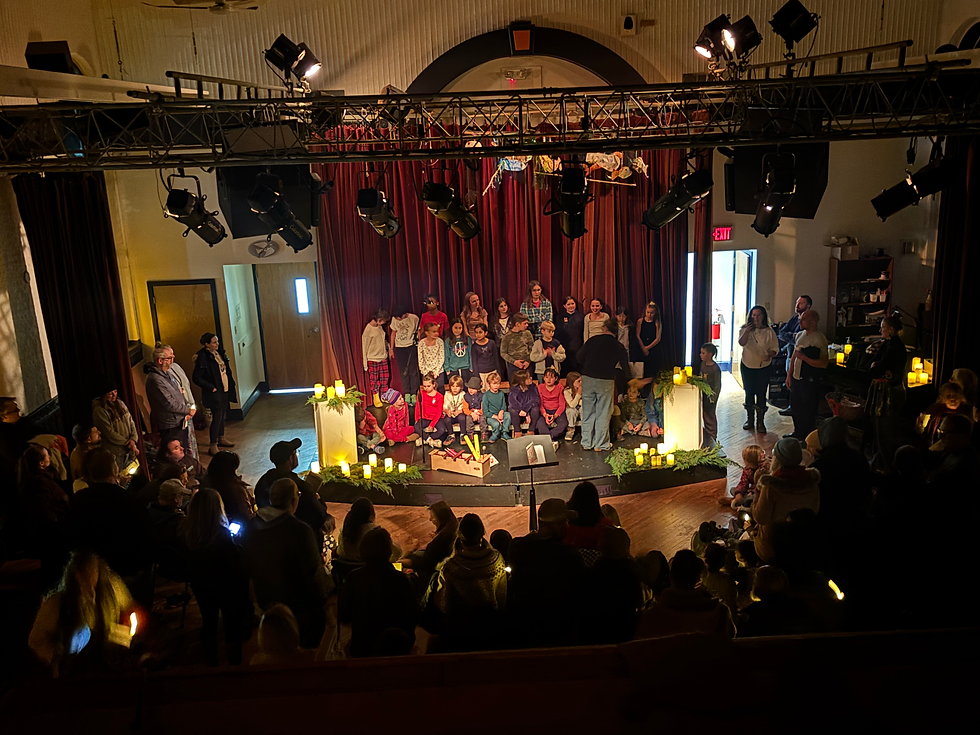Why Art Matters: The Role of Creative Expression in Childhood
- UFS Editorial
- May 21
- 4 min read
Updated: Oct 30
What happens when children are given the space to express themselves freely, without the pressure to be perfect or the fear of being wrong?
In a world that often moves too fast and prioritizes measurable outcomes, art offers something different. It slows us down. It invites observation, imagination, and emotional connection. For children, especially, art can be a powerful tool for self-discovery, learning, and making sense of the world around them.

At United Friends School, we see art as more than a subject. It's a vital way for students to make meaning, explore identity, and engage deeply with their world. As an independent Quaker school, our approach to visual arts is rooted in our core values: simplicity, peace, integrity, community, equality, and stewardship. These values guide how we teach art and how our students experience it.
Art as a Journey of Discovery
Children don’t approach a blank page the way adults do. They dive in and experiment. They play! And in that process, they begin to understand more about themselves - their preferences, ideas, and emotions.
In our visual arts curriculum, we build upon national and Pennsylvania visual art standards, providing a strong academic foundation while making room for creative exploration and student voice. Students across all grades explore various materials, techniques, and styles - including watercolor, chalk pastel, tempera, sculpture, weaving, and clay.

Throughout the year, we emphasized that art is not just about the final product; it’s about the process. When students are encouraged to reflect on their work, take creative risks, and follow their interests, art becomes a process of discovery. It teaches persistence, confidence, and flexibility. Mistakes turn into learning. Tangents turn into new directions. And the “final product” is only one small part of the story.

A key part of this process was collaboration with core classroom teachers, allowing students to integrate their artistic learning with academic subjects. Whether using symmetry in math-inspired stamp prints, illustrating science content through chameleon paintings, or designing history-themed townscapes in one-point perspective, these project-based learning experiences helped make learning more meaningful and multidimensional.
The Power of Integration
One of the most powerful things about visual art is its natural connection to other areas of learning. Children use symmetry in math-inspired stamp prints. They explore texture and adaptation by painting chameleons in science. They build one-point perspective townscapes while studying history.
In every division at UFS, students studied the lives and works of world-renowned artists, connecting their creativity to global artistic traditions and contemporary practices. They were introduced to Alma Thomas's vibrant color work, Bridget Riley's optical illusions, Keith Haring's expressive figures, and M.C. Escher's surreal tessellations.
Middle school students had the unique opportunity to visit the gallery of acclaimed sculptor Steve Tobin in Quakertown, PA. Tobin is known for his dramatic, nature-inspired installations, including the Roots sculpture at Trinity Church in New York City. Tobin’s work offered students an unforgettable experience in understanding scale, form, and the emotional power of art. The visit inspired students' sculptures in paper, clay, and cardboard.
These kinds of connections make learning multidimensional. They help students see how ideas flow across disciplines, how visual thinking supports abstract thought, and how creativity is present in every part of life, not just the arts.
Art as Reflection and Connection
More than anything, art gives children a voice. It helps them express things they might not yet have words for - questions about identity, feelings about the world, ideas about peace, justice, and care for the environment.
Aligned with our Quaker values, our art curriculum also invites students to think deeply about how creativity connects to community, justice, and stewardship. Projects often explore themes like balance, connection, and environmental care. For example, Notan designs helped students explore symmetry and contrast, while Keith Haring–inspired figure drawings led to conversations about human movement and shared experience.
Each class includes time for quiet reflection, peer feedback, and shared inspiration, nurturing not just artistic growth, but a culture of respect, curiosity, and care.
Showcasing Student Creativity
At UFS, student artwork is displayed throughout the year, transforming our hallways and shared spaces into living galleries. These displays not only celebrate technical progress, but also honor each child’s individual voice and perspective.
This spring, the multi-purpose room was filled with vibrant pieces from across grade levels from abstract paintings full of color and movement to whimsical clay sculptures that sparked joy and imagination. These exhibits tell the story of our students' creative journeys, and of a school community that values process as much as product.
The Takeaway
Art isn’t just an “extra” in a child’s education. It’s a way for young people to understand themselves, connect with others, and engage more deeply with the world. Whether or not your child considers themselves “artistic,” the process of making and responding to art can nurture essential skills that will serve them for a lifetime.

At United Friends School, we believe that art is not just enrichment, but essential. Through a comprehensive and integrated curriculum, meaningful connections to the work of real artists, and a values-driven approach to creative expression, we see every day how art helps students grow into thoughtful, expressive, and compassionate learners. And we can’t wait to see where their artistic journeys take them next.
.jpg)





















Comments